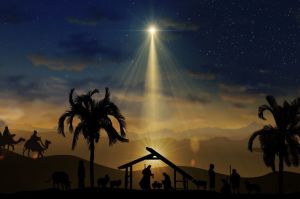Blue Supermoon Lunar Eclipse Happening at the End of January
The night sky is putting on a rare show this January. Skywatchers around the world are hoping for good viewing conditions for the Blue Moon, total lunar eclipse, and a Supermoon that are all happening in the first month of 2018.
This month's calendar for skywatchers is a little more packed than usual, with the show starting early on New Year's Day with the first full moon of the month. While a full moon in itself is not that special, these trio of sightings, which started from the full moon of Dec. 3 last year, are larger than usual.
The three full moons, starting from the one that rose on Dec. 3, are widely considered Supermoons, moonrises that are larger than normal when the moon approaches the Earth at its closet point in its orbit. Skywatchers are due for one very special Supermoon after the full moon of Jan. 1, according to the Independent.
Supermoons have their name for a reason, as full moons like these look 14 percent larger and as much as 30 percent brighter than the regular full moon.
Technically, the closest that the moon will approach the planet is on the night of Jan. 30, according to Space.com. That's a day before the moon reaches the absolute fullest when viewed from Earth, and it's close enough that the moonrise on Jan. 31 can be considered peak Supermoon as well.
This full moon at the end of the month is also a Blue Moon, the second full moon that comes up in the same calendar month. By coincidence, Jan. 31 is also when the first lunar eclipse of the year happens.
The closer-than-usual moon will enter the Earth's shadow at 5:51 a.m. ET, so watchers in New York City can enjoy the spectacle just before sunrise. The effect is subtle, as the eclipse is expected to darken the moon slightly and perhaps turn it a shade of red.





























